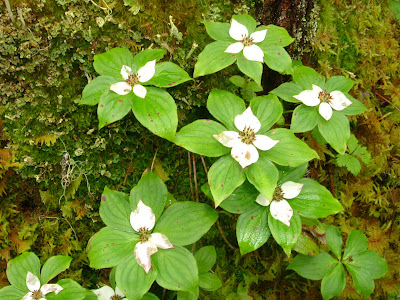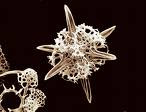Located as they are in Canada’s most active earthquake zone, the Queen Charlotte Islands have had their share of shake-ups and scourings. Many of the Islands’ hillsides are scarred by slides. But the rock beneath speaks of an even more violent past.
Very few people know that the rock in the Queen Charlottes holds the key to a catastrophic event from eons ago. We’ve heard tales and seen images of the cataclysmic damage caused by meteriorites smashing into the Earth’s surface.
Until recently, it was a meteorite impact that was blamed for the worldwide Triassic/Jurassic Mass Extinction. This wholesale dying out of species occurred some 200 million years ago. New evidence challenges the meteorite theory. Experts now believe that tectonic forces may have caused hundreds of volcanoes around the world to erupt simultaneously. The subsequent showers of volcanic ash would have altered the composition of the atmosphere dramatically and plunged the world into near total darkness for years until it settled from the sky.
The picture painted of the sun flickering fitfully through inky clouds, paling against the torrents of glowing lava, while everywhere life is smothered, poisoned, or starved, rivals the most apocalyptic imaginings of Hollywood or religion. We know from worldwide evidence that the extinction was dramatic and affected upwards of 70% of the world’s biota.
Perhaps counterintuitively, for one might think of water as a refuge from fire, smoke, and lava, it was marine lifeforms that suffered the most. This is particularly well documented in the rocks of the Queen Charlottes, especially at Kennecott Point and Kunga Island.
Radiolarian microfossils, tiny, siliceous, single-celled microrganisms, tell the tale. In the Upper Triassic rocks, which predate the extinction by about 10 million years, radiolarians are preserved in hundreds of forms. Just above them, in the early Jurassic rock layers laid down about the time of the great die-offs, only a fraction of the previous number of forms are represented. The more recent Jurassic rock shows a rebound of radiolarian diversity, though of course, in different forms, a diversity which continues to flourish and expand in today’s oceans.
 Camping at about 7,500 ft, we were treated to all four seasons and some great collecting.
Camping at about 7,500 ft, we were treated to all four seasons and some great collecting. 
















